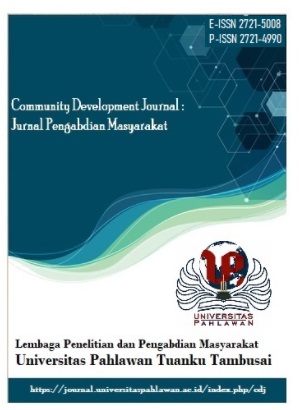SOCIAL INTERACTION IN THE LEARNING PROCESS ISLAMIC EDUCATION
DOI:
https://doi.org/10.31004/jrpp.v7i4.37555Keywords:
Educational Interaction, Islamic Religious Education, Communication, LearningAbstract
This study aims to explore educational interactions in Islamic Religious Education (PAI) learning processes in schools. Using a descriptive qualitative approach, this research analyzed data from various relevant literature sources to examine the components, patterns, and factors influencing educational interactions. The findings reveal that effective educational interactions involve two-way communication between teachers and students, encompassing components such as learning objectives, methods, teaching materials, and evaluation. Teachers play a crucial role in creating a conducive learning environment, both through classroom instruction and religious activities. Educational interactions not only enhance academic understanding but also shape students' character in line with Islamic values. In conclusion, educational interactions in PAI hold significant potential for supporting students' intellectual and spiritual developmentReferences
Andi Kamal Ahmad, Abdul Razzaq, Jumrah, Asmawati, H. (2024). The Strategy of the Madrasah Principal in Improving the Performance of Mathematics Teachers at MTs Negeri Pinrang. Journal of Mathematics and Natural Sciences Education, 23(1), 207–221.
Ariyana. (2019). Evaluation of Indonesian Language and Literature Learning. Semiba Journal, 1(2), 55–63.
Chomsum, A. (2020). Transformation of Education in the Digital Era. Journal of Community Service Innovation, 1(1), 1. https://kumparan.com/aan-herdian89/transformasi-pendidikan-di-era-digital-1zG74Ilpzc4/4
DA Trisliatanto. (2020). Research Methodology.
Elyati, E., Idi, A., & Samiha, Y.T. (2022). School/Madrasah as an Organization. Journal of Islamic Education, 173–190. http://jurnal.staialhidayahbogor.ac.id/index.php/ei/article/view/3376%0Ahttp://jurnal.staialhidayahbogor.ac.id/index.php/ei/article/viewFile/3376/1355
Fahri, LM, & Qusyairi, LAH (2019). Social Interaction in the Learning Process. Palapa, 7(1), 149–166. https://doi.org/10.36088/palapa.v7i1.194
Firman, FM, Syakir, SJ, & Athaya, AZ (2021). The Use of Digital Literacy in Islamic Religious Learning at the Panrannuangku Takalar Yogyakarta Student Dormitory. Proceedings of the National Seminar on Community Service Programs, 448–458. https://doi.org/10.18196/ppm.33.152
Halihasimi, Kholil, S., & Azhar, AA (2023). The Effectiveness of Islamic Digital Communication Ethics in Islamic Education in the Ministry of Religious Affairs of Central Aceh. Islamic Education: Journal of Islamic Education, 12(November), 5255–5266. https://doi.org/10.30868/ei.v12i04.5255
Handayani, T. (2015). Educational Interaction in Schools. Al-Riwayah: Journal of Education, 7(2), 161–176. http://ejournal.stain.sorong.ac.id/indeks.php/al-riwayah
Harahap, MY (2022). Learning Process Through Educational Interaction in Islamic Education. Al-Hadi Scientific Journal, 7(2), 31. https://doi.org/10.54248/alhadi.v7i2.4245
Jusar, I.R., Jamaris, J., & Solfema, S. (2023). Education in the Theory of Socialization Process in Elementary Schools. Basicedu Journal, 7(1), 276–287. https://doi.org/10.31004/basicedu.v7i1.4354
Nahdliyah, KA, & Naelasari, D. (2024). Educational Interaction of Islamic Religious Education Teachers and Students in Forming Muslim Personalities. 2, 116–125.
Nassaji, H. (2015). Qualitative and descriptive research: Data type versus data analysis. Language Teaching Research, 19(2), 129–132. https://doi.org/10.1177/1362168815572747
Pane, A. (2019). Educational Communication Between Educators and Students in Islamic Education. Komunikologi: Journal of Communication and Social Science Development, 3(2), 137. https://doi.org/10.30829/komunikologi.v3i2.6550
Pohan, N. (2017). The role of principal supervision in the implementation of teachers' main tasks: school action research. JPD: Journal of Elementary Education, 1(3), 132–139.
Pratama, R., Aisyah, SA, Putra, AM, Sirodj, RA, & Afgan, MW (2023). Correlational Research. JIIP - Scientific Journal of Educational Sciences, 6(3), 1754–1759. https://doi.org/10.54371/jiip.v6i3.1420
Saputri, RY, & Putra, J. (2022). Educational Interaction of Islamic Religious Education Teachers in Building Social Piety Attitudes of Students At Senior High Schools.
Sehabuddin, A. (2015). The Influence of Educational Interaction Between Teachers and Students on Student Learning Achievement in the Subject of Economics of Class X MA Nurul Iman Dasan Makam Lombok Timur in the 2011-2012 Academic Year. Society, 6(2), 69–80. https://doi.org/10.20414/society.v6i2.1474
Sopian, A. (2016). Duties, Roles, and Functions of Teachers in Education. Raudhah Proud To Be Professionals: Jurnal Tarbiyah Islamiyah, 1(1), 88–97. https://doi.org/10.48094/raudhah.v1i1.10
Downloads
Published
How to Cite
Issue
Section
License
Copyright (c) 2024 Asia

This work is licensed under a Creative Commons Attribution-ShareAlike 4.0 International License.






